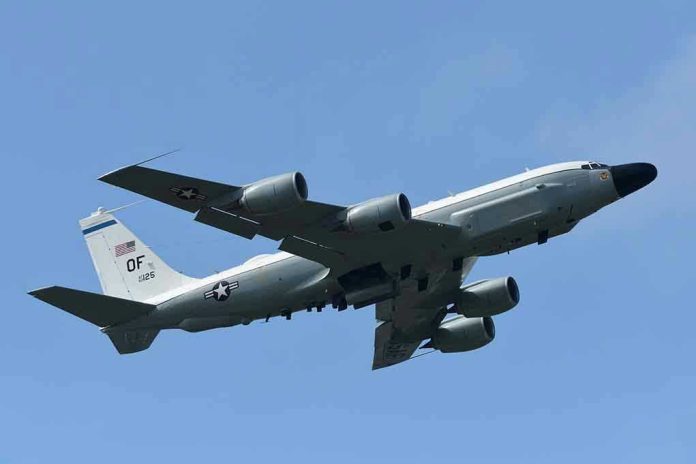
Aging military aircraft spark concerns as another high-profile emergency landing occurs, questioning the reliability of the U.S. Air Force’s executive fleet.
Story Highlights
- A crack in the windshield of Pete Hegseth’s plane led to an emergency landing in the UK.
- The incident underscores ongoing issues with aging military VIP transport aircraft.
- All passengers, including Hegseth, were unharmed, and the landing followed standard procedures.
- Recent similar incidents raise questions about the reliability and maintenance of the executive airlift fleet.
Emergency Landing Amidst Atlantic Flight
On October 15, 2025, Secretary of War Pete Hegseth’s U.S. Air Force C-32A experienced a windshield crack, forcing an emergency landing at RAF Mildenhall, UK. The aircraft was en route from a NATO meeting in Brussels when the incident occurred over the Atlantic Ocean. The crew executed a rapid descent to 10,000 feet, adhering to emergency protocols. All passengers, including Hegseth, were unharmed, and the Pentagon confirmed the safe landing.
The emergency landing involved a critical technical failure, highlighting concerns over the aging fleet of military VIP transport aircraft. The C-32A, a militarized Boeing 757, has been in service since the late 1990s. This incident follows similar events earlier this year, raising alarms about the reliability of these aircraft used for transporting senior government officials. The Pentagon’s commitment to safety and transparency is now under scrutiny, as stakeholders call for fleet modernization.
Implications for Military VIP Transport
The incident not only disrupted Secretary Hegseth’s travel but also intensified focus on the U.S. Air Force’s executive airlift fleet’s reliability. With a history of similar technical issues, the aging C-32A fleet faces calls for urgent maintenance improvements and potential replacement. Aviation safety experts point to the risks of relying on older aircraft for critical missions. The Pentagon assures continued investigation into the incident’s cause, emphasizing the importance of established safety protocols.
The emergency landing has economic and political implications. Budgetary discussions may now prioritize fleet upgrades to ensure the safety of senior officials. Furthermore, the incident serves as a demonstration of U.S.-UK cooperation during emergencies, showcasing the strategic partnership between the allies. Public reassurance remains a priority as the investigation progresses.
Call for Fleet Modernization
Aviation analysts recognize windshield cracks as a known risk in older aircraft, typically managed through emergency procedures. This episode, however, amplifies the discussion on modernizing the executive airlift fleet. Defense experts stress the need for robust maintenance regimes to secure the safety of VIP transport missions. The incident reinforces the urgency of addressing systemic risks associated with aging military aircraft.
The Pentagon’s response and subsequent investigation into the windshield crack’s cause are key to ensuring continued confidence in the safety of military transport operations. This incident marks another chapter in the ongoing narrative of challenges faced by the U.S. Air Force’s executive fleet, urging stakeholders to reassess and prioritize modernization efforts.







